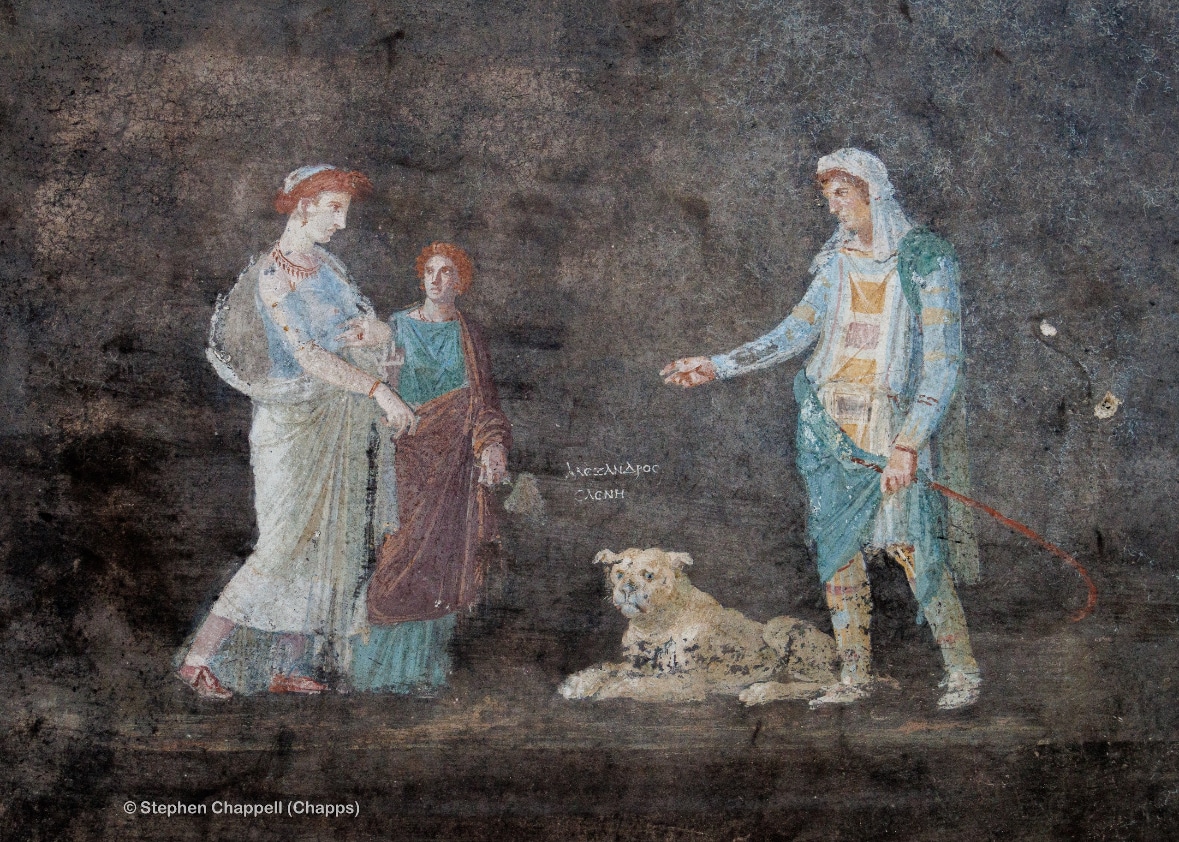In honor of International Dog Day (August 26 annually), we’d like to dedicate this post to our four-legged friends…
”“The dog alone knows his master, and he alone recognizes his own name. He alone, too, in his master’s defense, will lay down his life; and, let his master die, he will remain on the watch by the body.”
~ Pliny the ElderNaturalis Historia (Book 8, Chapter 61)

Mosaic depicting a sitting dog, Ptolemaic Period, 2nd century BCE, Bibliotheca Alexandrina Antiquities Museum

Fresco of dog, Pompeii of an intact Thermopolium in Regio V. 1st c. CE
Ancient Rome loved dogs.The deep bond between humans and dog has endured for millennia. In antiquity,dogs were more than just pets—they were essential to Roman life as guardians, hunters, and loyal companions. This timeless relationship is beautifully immortalized in Roman art, giving us a window into the lives of these cherished animals and their importance in the ancient world.
Dogs in ancient Rome were indispensable, fulfilling roles that ranged from practical to prestigious. Hunting dogs were vital for securing food, guard dogs vigilantly protected homes, and others marched alongside soldiers into battle. For Roman women, lap dogs were a symbol of status and luxury, embodying both affection and refinement.
Romans held dogs in high regard, not just in daily life but also in their religious and cultural traditions. The festival of Lupercalia, for instance, celebrated the legendary she-wolf that nurtured Romulus and Remus, the mythical founders of Rome, underscoring the deep-rooted significance of dogs in Roman society.
These ancient depictions serve as a powerful reminder of the enduring bond between humans and dogs. Just as they did in ancient Rome, dogs continue to enrich our lives with their steadfast loyalty and boundless love.

She Wolf, the iconic symbol of Rome. Though the she wolf was depicted in antiquity, this particular statue has been dated to the Medieval era

Fresco of dog, Pompeii

The Dog of Alcibiades, 2nd Century AD. Marble

Hunting dog. Green marble. Villa of Maecenas, 1st AD.
This content is brought to you by The American Institute for Roman Culture, a 501(C)3 US Non-Profit Organization.
Please support our mission to aid learning and understanding of ancient Rome through free-to-access content by donating today.
Cite This Page
Cite this page as: Darius Arya, The American Institute for Roman Culture, “Dogs in Ancient Rome” Ancient Rome Live. Last modified 10/23/2024. https://ancientromelive.org/dogs-in-ancient-rome/
License
Created by The American Institute of Roman Culture, published on 10/23/2024 under the following license: Creative Commons: Attribution-NonCommercial-ShareAlike. This license lets others remix, tweak, and build upon this content non-commercially, as long as they credit the author and license their new creations under the identical terms. Please note that content linked from this page may have different licensing terms.

